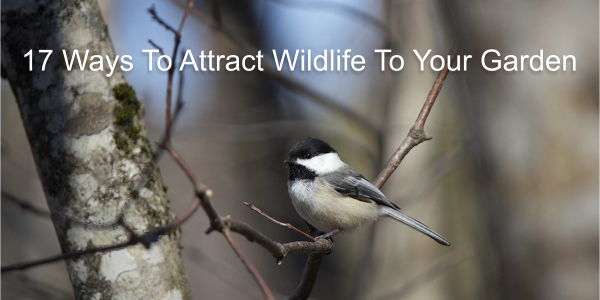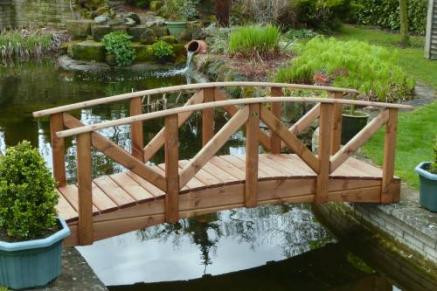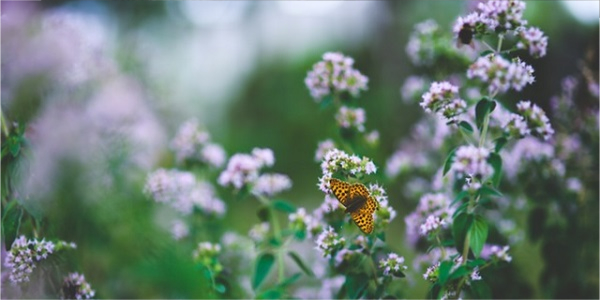| Tags | design and inspiration fun and interesting cleaning and maintenance garden bridge guide great outdoors guide children seating show all posts |
How To Attract Wildlife To Your Garden: 17 Top Tips
Gardens are a lovely place to spend time relaxing.
But a well kept garden isn't just welcoming for people: It's also a great way to attract wildlife. Not only does this make it a welcoming place for natural animals, it can also improve your own garden enjoyment. You can spend hours watching the wildlife flock to your yard.
So, what steps can you take to attract more wildlife to your garden? Here are our top tips.

17 Ways To Attract Wildlife To Your Garden
1. Attract birds with a well stocked bird table
One of the easiest animals to attract to your garden are birds. Adding a bird table to your garden is a great way to bring the birds. Remember to keep it stocked with plenty of food and water, as this is the ideal place for birds to eat and bathe. You can attract birds all year round; read our guide to taking care of your bird table in winter for more information on how to keep your winged friends visiting your garden.
2. Install a pond for fish and amphibians
A pond is an ideal way to turn your garden into a hive of activity. Of course, this allows you to introduce some fish, but can also help to entice amphibious creatures (those that live in water and on land). These include frogs and toads. To allow them easy access, surround the pond with some plants and vegetation, and ensure that at least one edge is shallow enough for them to easily hop in and out of the water.
Consider adding some water plants for additional shelter. A well tended pond can also attract a range of insects; keep an eye out for dragonflies circling above it too!

Wooden Garden Bridge
A pond can help to attract new wildlife to your garden, as well as becoming a feature. Above is a garden pond complete with the Europa Low Rail Garden Bridge.
3. Give insects a life of luxury with an insect hotel
Insects are vital to a thriving garden. Not only do they contribute to the garden's ecosystem, they also attract larger animals including birds and small mammals. A great way to make your home welcoming is to include an insect hotel.
This is essentially a structure filled with logs, dried leaves and deadwood that makes a great home for a range of creatures. You can buy one from a store, or even have a go at making your own.
5. Don't exclude land animals
If you want land animals to come into your garden, you'll need to give them access. If your garden is fenced, leave a small hole at the bottom to allow frogs and hedgehogs to get in.
If your garden is walled all the way round, consider replacing one wall with a hedge instead.
6. Offer shelter by planting a hedge
A hedge is a superb way to make your garden welcoming to wildlife. This can provide shelter and nesting for a wide range of animals. They can also offer a natural food source, including berries and nuts. Some varieties to consider include:
- Hawthorn
- Blackthorn
- Field maple
7. Use climbing plants to create nests
Climbing plants are great for adding depth and interest to your garden, and hiding any ugly walls or fences. They can also provide ample nesting opportunities for birds, as well as attracting insects.
8. Entice hedgehogs by leaving out some food
Hedgehogs are a great sight to see in your garden – and by leaving out some food, you can attract them to your outdoor space. They typically enjoy cat and dog food, but don't give them bread or milk. Contrary to popular belief, these can actually be harmful to hedgehogs by making them extremely ill.
9. Use organic fertilisers on your garden to avoid harming wildlife
If you're a keen gardener, you'll know the frustrations of plants not growing properly. It's tempting to use fertilisers to encourage growth, but many of these can contain harmful chemicals that can cause health problems for animals and wildlife.
Instead use organic fertilisers made of natural substances. This will help your plants and flowers grow, but without causing harm to any garden visitors.
10. Encourage insect activity with an area of longer grass
A neatly trimmed lawn is a thing of beauty, but your whole garden doesn't have to look like a golf green. And leaving just a section of longer grass will help to attract more insects by providing nesting and shelter. These insects in turn provide food for larger animals and birds, so a slightly longer cut is great for turning your garden into an active area.
11. Create a mini meadow to promote wildlife activity
If you want to take it a step further, try creating a meadow by mixing different grass seeds with wildflower seeds, and letting them knit together naturally. This will again draw in plenty of wild insects, and you might also expect to see small mammals like voles and shrews that thrive in those conditions.
12. Inject colour using flowers to entice butterflies and bees
Butterflies are a beautiful creature, and you can enjoy the many colours and patterns they bring to your garden by planting colourful flowers. Try to include high pollen plants that will also attract bees, and you'll soon see your flowerbeds turn into a hive of natural industry and beauty. The colours will also give your garden a new found visual appeal, so it's a win-win!

Butterfly On A Flower
Adding colourful flowers to your garden can help to attract butterflies and bees.
13. Leave a wilderness to attract wildlife over time
Sometimes the best way to attract visitors is to do nothing. Literally nothing. While it is nice to have a neat and tidy garden, leaving just one corner or area to grow naturally will attract regular wildlife over time – think of it as your own wilderness.
14. Grow trees to offer shelter and nesting
Many animals and birds love to take refuge by nesting in and around trees. Try planting a tree or two at the boundaries of your garden to encourage more wildlife to take up residence. If you don't have the space, bushes and shrubs can work the same way.
15. Encourage neighbours to be wildlife-friendly
Wild animals love to explore, which means they don't like being confined to a single small space. Instead, they like to hop between gardens and flit from tree to tree. Get together with neighbours and encourage them to make their gardens wildlife-friendly too. This will create a wider area of welcoming gardens that will provide an attractive area for wildlife to visit.
16. Keep pets at bay to prevent scaring off wild animals
If you love animals, there's a good chance you'll have domestic pets. But while these can be great company, they can also be harmful to your chances of seeing wild animals in your garden.
To avoid scaring off wildlife, keep an area of the garden pet free. If you have a cat, try adding bells to its collar, as this will help any birds to be alerted of their presence, giving them time to escape.
17. Don't forget to monitor your garden at night
Many people love to spend time watching wildlife in their garden, perhaps spending an afternoon bird watching. But what a lot of people don't realise is that when night falls, the magic really starts to happen.
Instead of ignoring your garden in the evening, monitor it from dusk onwards, and you'll see many more animals. The insects in your grass and ponds can attract bats. You can also try planting some nigh-scented plants, including buddleia and evening primrose. These are great for enticing moths to the garden, and this will again encourage bats to visit.
You could also leave out some food to attract small animals like badgers and hedgehogs. Badgers in particular are fond of unsalted peanuts, while rural areas may see wild deer visit – they are keen on carrots. You might also see foxes in your garden at night. (is it illegal to entice foxes? If it's not, you could say they like eggs here)
In countryside gardens, tawny owls can sometimes visit. You could place an owl box in your garden to encourage them to return.
One thing to remember is to not have a huge security light on a sensor that illuminates the whole garden, as this can scare off wildlife. Instead, use low level lights or watch from a dimly lit room as the night visitors arrive.
Do you have any tips?
If you want your garden to become more wildlife-friendly, try some of the tips above.
Do you have any ideas of your own for attracting wildlife? Leave a comment below, we'd love to hear your opinions!
